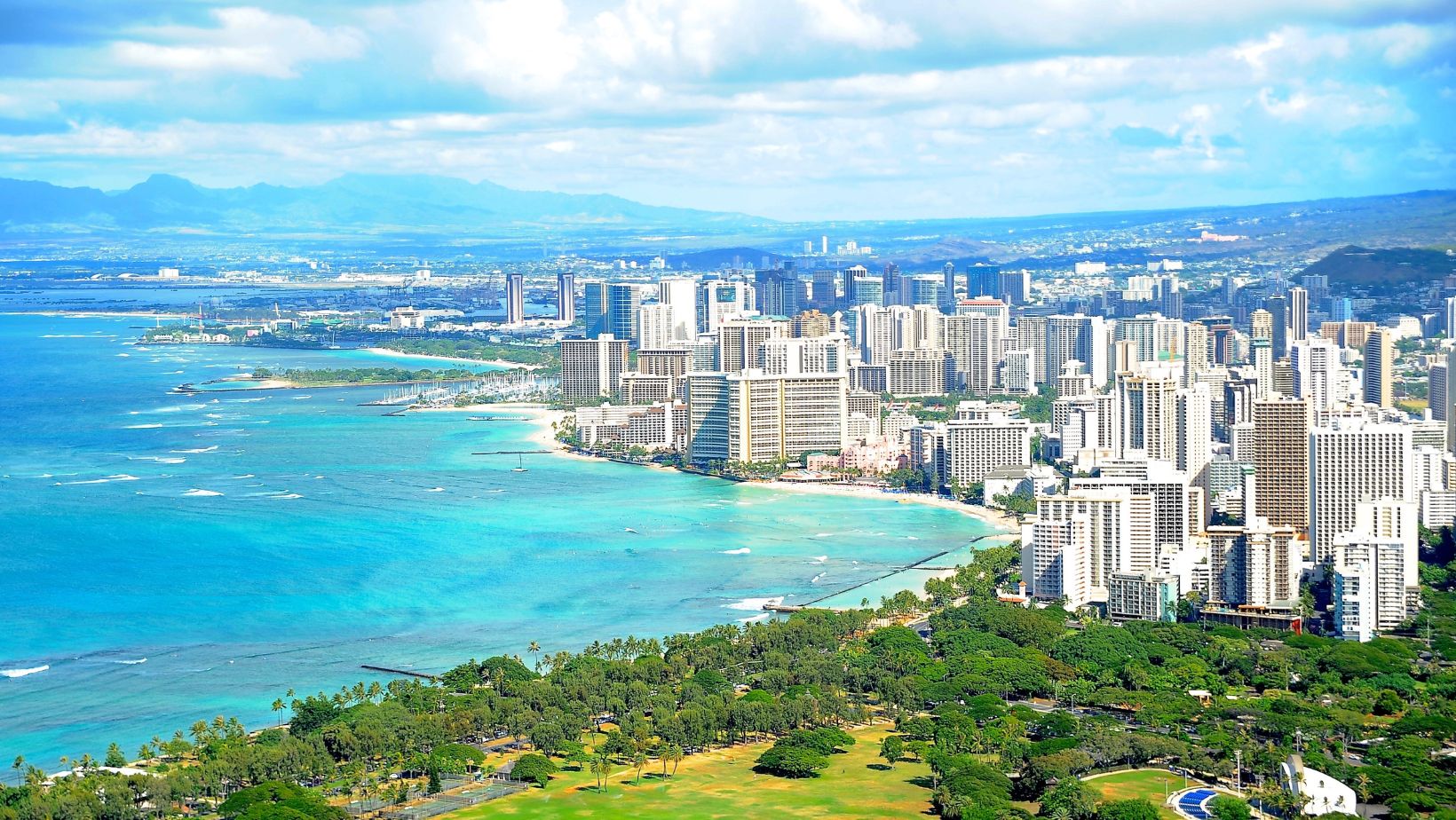Key Takeaways
- Diverse Transportation Options: Honolulu offers various transportation methods, including public buses, taxis, rideshares, bike rentals, and car rentals, catering to both locals and tourists.
- Affordable Public Transit: TheBus operates over 100 routes at a standard fare of $3, providing an economical way to navigate key areas of the city, including popular attractions and neighborhoods.
- Eco-Friendly Choices: Bicycling and walking are promoted as sustainable transportation alternatives, with bike rentals starting at $10 per hour and pedestrian-friendly areas enhancing the travel experience.
- Rideshare Convenience: Services like Uber and Lyft offer convenient and flexible taxi alternatives, with fares generally ranging between $10 and $30 for short trips, providing personalized transportation options.
- Traffic and Accessibility Challenges: Honolulu faces significant traffic congestion issues, especially during peak hours, and ongoing accessibility challenges affect underserved areas and individuals with disabilities.
- Sustainable Travel Impact: Utilizing public transit and eco-friendly travel options contributes to reducing traffic congestion and promoting a greener urban environment for both residents and visitors.
Honolulu, the vibrant capital of Hawaii, offers a unique blend of urban life and stunning natural beauty. Navigating this island paradise can be both exciting and challenging. With its diverse transportation options, residents and visitors alike can easily explore everything from pristine beaches to bustling markets.
Public transportation in Honolulu is more than just buses. The city’s infrastructure includes a mix of taxis, rideshares, and bike rentals, catering to various preferences and budgets. Understanding these options can enhance any travel experience, making it easier to enjoy the rich culture and breathtaking landscapes that Honolulu has to offer. Whether it’s a day at the beach or a night out in the city, knowing how to get around is essential for making the most of this tropical haven.
Honolulu Transportation
Honolulu offers a variety of transportation options that accommodate both locals and visitors. These methods range from public buses to private rideshares, providing efficient ways to explore the island.
- Public Buses: The Oahu Public Transit Authority operates theBus, featuring over 100 routes. These buses cover significant areas, including Waikiki, Downtown, and various neighborhoods. They support economical travel with a standard fare of $3 per ride.
- Taxis and Rideshares: Taxis are widely available throughout Honolulu, providing convenient door-to-door service. Rideshare services like Uber and Lyft also operate, offering flexible options for users who prefer app-based bookings. Fares typically vary based on distance and demand.
- Bicycle Rentals: Multiple shops and services provide bicycles for rent, promoting eco-friendly transportation. Cycling lanes are present throughout key areas, enhancing safety. Rates usually start at around $10 per hour, making it an affordable and healthy travel alternative.
- Car Rentals: Various car rental agencies operate at Honolulu International Airport and within the city. Renting a car can offer freedom for exploring beyond Honolulu. Daily rental rates average between $40 to $100, depending on the vehicle type.
- Public Shuttles: Shuttle services connect major hotels, the airport, and popular tourist spots. These services facilitate convenient travel for visitors. Rates usually range from $15 to $30 per person for airport transfers.
Understanding these transportation options enables efficient planning, allowing travelers to maximize their time exploring Honolulu’s attractions and culture.
Types of Transportation Options
Honolulu offers various transportation options, catering to different preferences and needs. The methods include public transit systems, ride-sharing services, and opportunities for bicycling and walking.

Public Transit Systems
TheBus operates as Honolulu’s primary public transit system, featuring over 100 routes that serve key areas such as Waikiki, Downtown, and the University of Hawaii. It provides an affordable fare of $3 per ride, making it accessible for both residents and tourists. TheBus is equipped with real-time tracking features, aiding passengers in planning their journeys effectively. Additionally, the route network covers major attractions, ensuring easy access to beaches, shopping areas, and scenic viewpoints.
Ride-Sharing Services
Ride-sharing services like Uber and Lyft are widely available in Honolulu, offering an efficient alternative to traditional taxis. Passengers can enjoy door-to-door service with the convenience of app-based booking. Prices vary based on demand and distance but generally range from $10 to $30 for short trips within the city. These services provide flexibility for travelers who prefer not to navigate public transport or wish for a more personalized experience.
Bicycling and Walking
Bicycling promotes an eco-friendly way to explore Honolulu’s scenic environments. Numerous bike rental shops offer rates starting around $10 per hour, with daily rental options available. Popular biking routes include paths along the coastline and through urban parks. Walking is also an excellent option, especially in pedestrian-friendly areas like Waikiki, where tourists can easily visit shops, restaurants, and beaches. Designated walking paths and pedestrian zones enhance safety and enjoyment for visitors on foot.
Advantages of Honolulu Transportation
Honolulu’s transportation system offers numerous benefits that enhance travel experiences. Key aspects include cost-effective choices and positive environmental impact.
Cost-Effective Choices
Honolulu’s transportation options remain budget-friendly. Public buses, operated by the Oahu Public Transit Authority, charge a standard fare of $3 per ride. Rideshare services like Uber and Lyft provide affordable options, with fares typically between $10 and $30 for short trips. Additionally, bike rentals start at approximately $10 per hour, appealing to budget-conscious travelers. Car rental rates average from $40 to $100 daily, making it possible to explore the island at a reasonable cost. Public shuttles facilitate transfers between hotels and attractions, with fees between $15 and $30 for airport connections.
Environmental Impact
Honolulu’s transportation methods promote sustainability. TheBus encourages public transit usage, reducing individual car trips and easing traffic congestion. Bicycle rentals support eco-friendly travel, allowing individuals to enjoy the city’s scenic routes while minimizing carbon footprints. Walking in pedestrian-friendly areas, such as Waikiki, enhances the overall experience while decreasing reliance on motor vehicles. Collectively, these transportation choices contribute to a greener and more sustainable urban environment.
Challenges in Honolulu Transportation
Despite its diverse transportation options, Honolulu faces significant challenges that impact the efficiency and accessibility of its transportation system.
Traffic Congestion
Traffic congestion poses a substantial challenge in Honolulu. Major thoroughfares often experience heavy delays, especially during peak hours, with some studies indicating that commuters spend an average of 30 minutes in traffic daily. Limited road infrastructure and the island’s geographic constraints amplify these issues. The ongoing popularity of tourism further contributes to congestion, particularly in high-traffic areas such as Waikiki and Downtown. Solutions like expanded public transit services and improved traffic management systems are under consideration to alleviate these challenges.
Accessibility Issues
Accessibility issues affect various demographics in Honolulu. While public buses provide service to many neighborhoods, some areas remain underserved, limiting access for residents without personal vehicles. TheBus has implemented measures like the ACCESS program for individuals with disabilities, but awareness and utilization remain low. Sidewalks and pedestrian crossings often lack adequate maintenance or accessibility features, posing difficulties for elderly citizens and those with mobility impairments. Addressing these issues is essential for creating a more inclusive transportation system that caters to all residents and visitors.
Exploring Honolulu
Honolulu’s transportation landscape offers a variety of options that cater to both residents and visitors. From the efficiency of theBus to the convenience of rideshares and the eco-friendliness of bike rentals, there’s something for everyone. While challenges like traffic congestion and accessibility issues persist, ongoing improvements can enhance the overall experience. Embracing these diverse modes of transport not only enriches travel but also supports a more sustainable urban environment. Exploring Honolulu becomes a seamless adventure when utilizing the right transportation methods.

![Read more about the article 15 Best US Cities for Solo Travel: Ultimate Guide & Safety Tips [2024]](https://b70885.com/wp-content/uploads/2025/03/Untitled-design-2025-03-22T183424.166-300x169.jpg)
